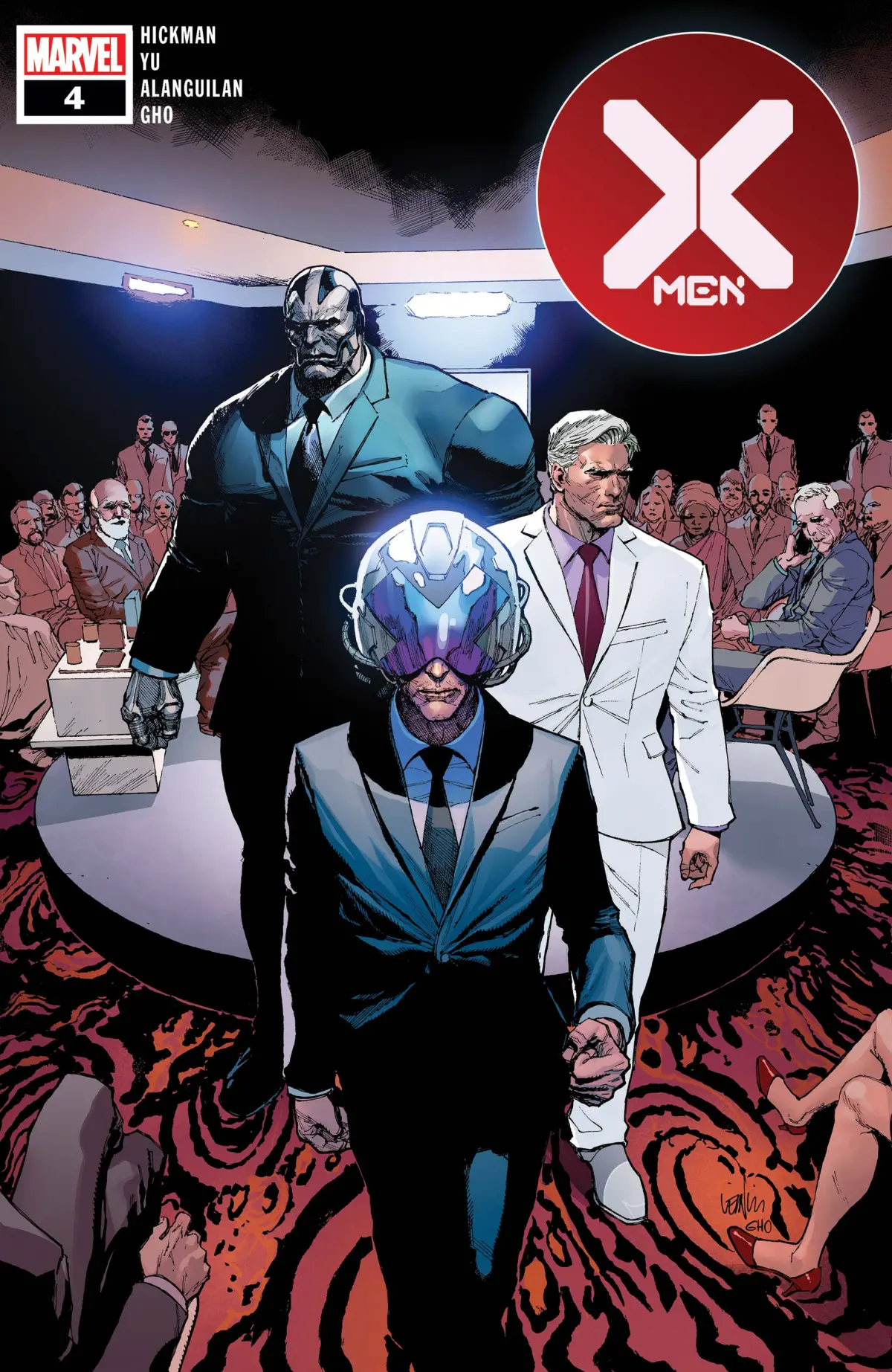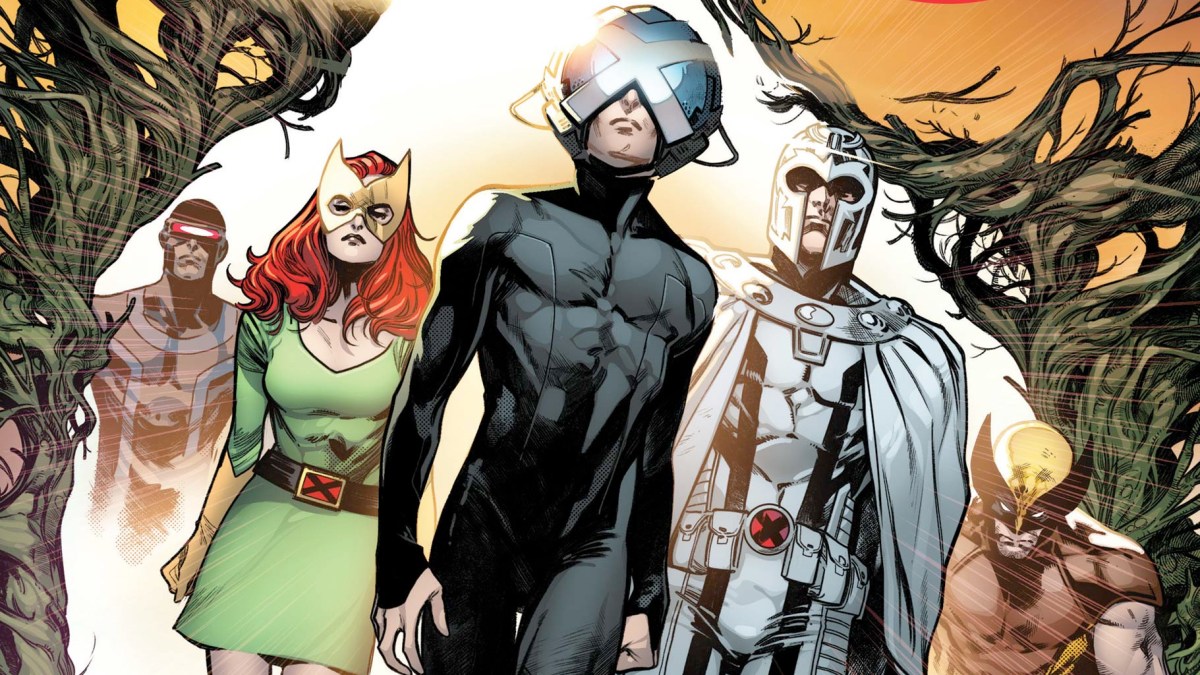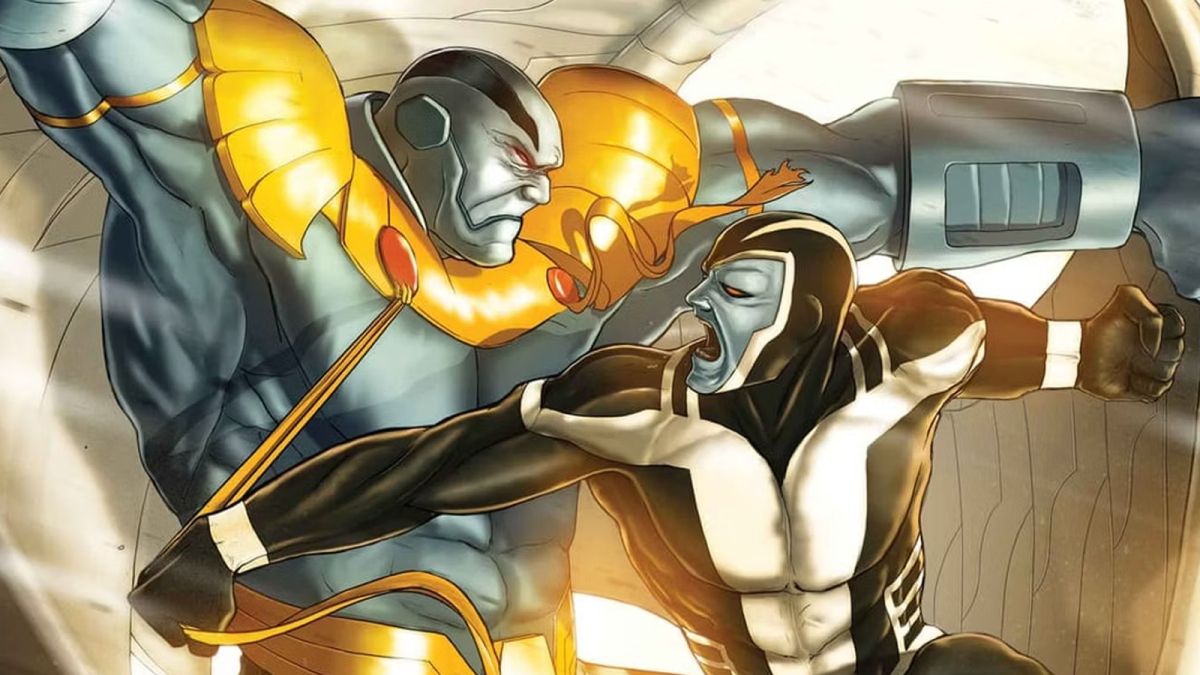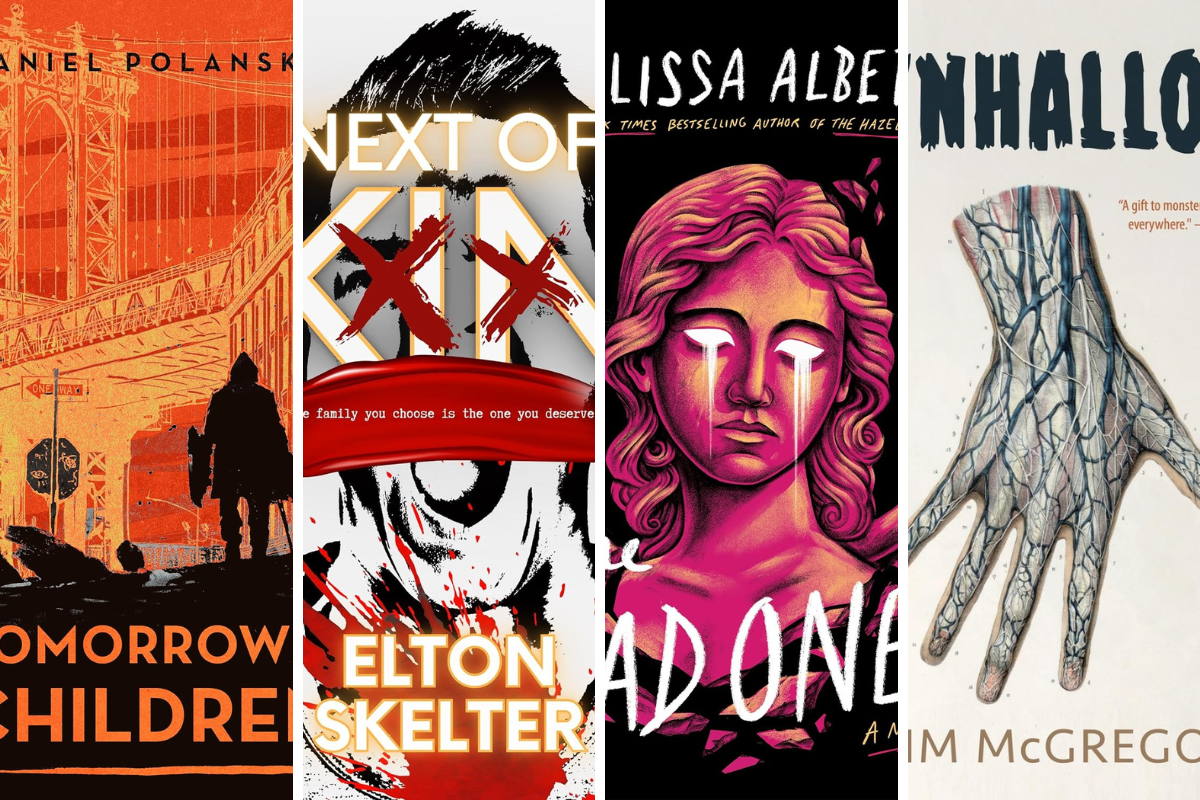Marvel’s X-Men line remains one of the most fascinating brands in mainstream comics. It is a thematically rich and narratively messy collection of ambitious high-concept comic books launched under the oversight of X-Men writer Jonathan Hickman and then forced to define itself in the wake of his premature departure.
The X-Men had once been Marvel’s flagship title. Under writer Chris Claremont, Uncanny X-Men became the company’s best selling comic “throughout the 1980s.” Working with artist Jim Lee, Claremont’s X-Men #1 from August 1991 is still the best selling single edition comic ever. The brand was a big deal on television with shows like X-Men: The Animated Series, and Bryan Singer’s X-Men was one of the movies that helped to kickstart the modern superhero multimedia boom.
However, with the launch of the Marvel Cinematic Universe, the X-Men flagged. The comic got stuck in a variety of uninspired narrative loose ends. Claremont would speculate that this was because the X-Men multimedia rights remained with Fox, so – as a Disney subsidiary – Marvel had no interest in generating potential publicity and source material for a rival studio. Hickman would make similar suggestions about the Fantastic Four comic, which was in the same situation.
Related: X-Men ’97 First Look Revealed with Magneto as Leader, Season 2 Greenlit

After Disney purchased Fox, which brought the X-Men film and television rights back under Marvel’s control, Marvel Comics took a big swing with one of their most tarnished brands. It gave complete creative control to Hickman, who effectively reinvented the X-Men with two intertwined miniseries launching July 2019, House of X and Powers of X. These comics marked a clear departure from the brand’s familiar status quo built around the superpowered students of a school in upstate New York.
Hickman moved the X-Men and mutants to the sentient mutant island of Krakoa, situated in the Pacific Ocean. Guided by Charles Xavier and Magneto, mutants established a new nation and society apart from the world that feared and hated them. Hickman assembled an impressive team of writers and artists to flesh out this concept, pushing away from the outdated “respectability politics” that defined so many earlier X-Men comics. This would come to be known as “the Krakoa Era.”
Hickman is one of the defining modern comic book writers. He trained as an architect, and this is reflected in how he tells his stories. There is a strong design element to his work, particularly his use of info pages that break up his comics and can include memos, diagrams, and encyclopedia entries. This approach can be divisive. “I did not join the X-Men to spend all my time peering at graphs,” opined Emma Frost in a recent issue of Immortal X-Men, a winking joke at the convention.
However, Hickman’s background in architecture is also reflected in how he tends to structure his narratives. Hickman is a writer who typically maps out long-term plans. His multi-year runs on titles like Fantastic Four and The Avengers demonstrate a remarkable gift for planning. He will seed setups and payoffs well in advance. As a rule, Hickman’s longer runs read exceptionally well in gigantic collected editions like his Fantastic Four or Avengers omnibuses.
Related: Ms. Marvel Suggests It Will Always Be Inhumans vs. X-Men

This approach is woven into the fabric of his X-Men run, which is built around two competing long-term gambits. It is essentially the story of two architects trying to model a sustainable future. The big reveal early in his run is that recurring X-Men character Moira MacTaggert is a mutant who has the power of reincarnation. She has lived nine lives and seen nine futures, and is fighting to bring about the one possible future where mutantkind can survive. “We always lose,” she advises Xavier.
Hickman suggests the X-Men and mutantkind’s enemy isn’t humanity, but posthumanity. It is artificial intelligence. The typical X-Men narrative is rooted in humanity’s fear that mutants will replace them, the present stubbornly trying to reject the future. In contrast, Hickman’s X-Men is about two competing visions of the future. Moira’s opposite number is the mutant Karima, another traveler from the future trying to prevent mutantkind’s dominance. “The mutants always win,” she warns her allies.
Naturally, Hickman had a plan for his X-Men epic. “When I pitched the X-Men story I wanted to do, I pitched a very big, very broad, three-act, three-event narrative, the first of which was House of X,” he explained. “And while this loosely worked as a three-year plan, I told Marvel upfront that I honestly had no idea how long the first part would last because there were a lot of interesting ideas that I had seeded that other creators would want to play with, and so, we left this rather open-ended.”
Hickman would depart the X-Men line earlier than anticipated, with the four-issue event comic Inferno, illustrated by Valerio Schiti and Stefano Caselli. That miniseries feels like a commentary on the departure of the architect from the larger X-Men project. Xavier and Magneto lose control of their plans. Moira’s schemes are derailed by Destiny and Mystique. The comic teases the possibility that Moira could be killed, resetting the status quo — that all could be “gone. As if it were nothing.”
To be clear, Hickman’s departure was by mutual consent. It was decided that the status quo should be allowed to continue longer that he had initially planned. “So the plan didn’t change because no one liked Jonathan’s plan,” offered group editor Jordan White. “The plan changed because Jonathan changed his mind about what we should do. There are absolutely aspects of it that are going to happen. And there are at least some aspects that won’t happen.”
It is also worth noting that Hickman was a collaborative writer. While he was the driving creative force on his Fantastic Four and Avengers runs, he worked with the authors and artists of the other books as part of his oversight of the X-Men line. According to S.W.O.R.D. and X-Men: Red writer Al Ewing, “as Head of X, Jonathan is incredibly willing to share his throne, so to speak.” However, Hickman’s departure left the X-Men line without a de facto showrunner and head writer.
Related: In X-Men: First Class, James McAvoy Gave Us a Compelling Professor Xavier
The X-Men line remains one of the most interesting and ambitious sub-franchises in modern comics. Titles like Kieron Gillen and Lucas Werneck’s Immortal X-Men and Al Ewing and Stefano Caselli’s X-Men: Red are among the best monthly comics that Marvel are publishing. Si Spurrier and Jan Bazaldua’s Legion of X was canceled before its time. These are big ambitious works that offer bold and refreshing departures from the tired tropes and conventions of the genre.
However, the line doesn’t seem to have as clear a direction as it did under Hickman. While the only truly line-wide events between House/Powers of X and Inferno were X of Swords and The Hellfire Gala, the first two years of Immortal X-Men and X-Men: Red constantly found themselves diverted into events like A.X.E.: Judgment Day, Sins of Sinister, and Fall of X. There was no space for these titles to define their own voices as there had been under Hickman.
Of course, Gillen, Ewing, and Spurrier are different kinds of writers than Hickman. They are more improvisational, more willing to work around the chaos of mainstream comic book publishing. Much of Gillen’s best work at Marvel finds the writer caught in the gravity of bigger events, writing the Uncanny X-Men tie-in to Avengers vs. X-Men or spinning Journey into Mystery out of Thor and Fear Itself. Ewing stitched together an Avengers epic from shorter runs on books like Mighty Avengers and Ultimates.
This is evident even within their work in the main X-Men line. Ewing hopped from the relatively marginal book S.W.O.R.D. to the higher-profile X-Men: Red, carrying over many of the characters and plot threads. Spurrier’s ongoing Legion of X was recognizable as a continuation of his Way of X miniseries, and wrapped up in a Sons of X one-shot. There is a sense of improvisation and adaptation that exists in contrast to the more clockwork precision of Hickman’s approach to writing for the X-Men line.
This shift is woven into the narrative in a way that feels deliberate. Repeatedly throughout their run on Immortal X-Men, Gillen and Werneck riff on iconic scenes from Hickman’s run, to invite comparison. Both Gillen and Ewing repeatedly return to the idea of writing as a central thematic motif, foregrounding the idea of authorship — Destiny writes her notebooks, Colossus is being written by a sinister Russian author, and X-Men: Red publishes pages from “The New History of Arakko.”
More to the point, the post-Hickman X-Men line is not about two competing visions of the future, but instead about multiple competing authors seeking to control the flow of the narrative, ultimately losing control. In the opening pages of Immortal X-Men, Mr. Sinister mocks the arrogance of Xavier and Magneto for “thinking their plan was the plan.” However, moments later, Mr. Sinister finds his own plans derailed when he makes a miscalculation about a vote on the island’s Quiet Council.
If Hickman’s X-Men is about competing architects of history, his successors suggest that the idea of authorship is a farce. Gillen’s Immortal X-Men rejects the idea of a single unifying narrative. The role of the book’s perspective shifts from one issue to the next, meaning it has no protagonist. The clean Hickman diagrams that mapped Moira’s possible futures are gone, replaced with Destiny’s hazy and foggy predictions. Sinister tries to assert control of the narrative, but is constantly outmaneuvered by others: Destiny, his own creations, and even three clones of himself.
In X-Men: Red, Abigail Brand finds herself working like a monthly comic book writer, having to improvise around big line-wide events like Empyre or The Last Annihilation to get to the outcome that she wants. Her master plan is “a living document,” constantly revised and tweaked. However, like Sinister, she discovers the folly of this approach. Her schemes are quite literally mocked by Roberto Da Costa. Defeated and humiliated, she finds herself confronted by the Fisher King, “Your grand plans are dust, Abigail Born-as-Axus-Ended.”
Related: The Courts Proved Magneto Right: The X-Men Are Not Human
It is also a recurring preoccupation of Spurrier’s Legion of X, which spun off from Nightcrawler’s attempts to found a mutant religion in Way of X. In Legion of X, these schemes are inherently monstrous. “Evil is turning people into things,” explains Lost. “Evil is the theft of choice.” The comic’s first arc hinges on a villainous scheme by Ora Serrata to smuggle a god into Arakko to give her “power enough to guide this wayward people.”
This new wave of X-Men comics makes an interesting contrast to Hickman’s more rigorously structured approach. These comics often celebrate the inherent chaos that results from the failure of these would-be architects to impose their grand narratives upon the universe. As Banshee lies dying in the final pages of Si Spurrier, Lorenzo Tammetta, and Phillip Sevy’s Nightcrawlers miniseries, he muses, “There’s nothin’ matters so much… a-as bein’ in charge o’ your own story before the end.”
These themes have a certain contemporary resonance. Over the past few years, it seems like the world has been trapped in a constant state of escalating chaos, challenging the longstanding ideas that politicians and thought-leaders were playing “four-dimensional chess.” In their own ways, the X-Men comics written by Gillen, Ewing, and Spurrier reflect that sense of disillusionment. There is no plan, and even the evil masterminds are incompetent.
Since Hickman’s departure, one of the bigger challenges facing the X-Men line has been a sense that there is no long-term plan and no hand guiding the ship. Reading Immortal X-Men, X-Men: Red, and Legion of X, this has become part of the text itself. As Fall of X rages and Marvel Studios continues to inch towards a cinematic adaptation, the X-Men line still lacks a strong authorial voice guiding it to a clear future. This is at once liberating and terrifying. The future is a blank page.





